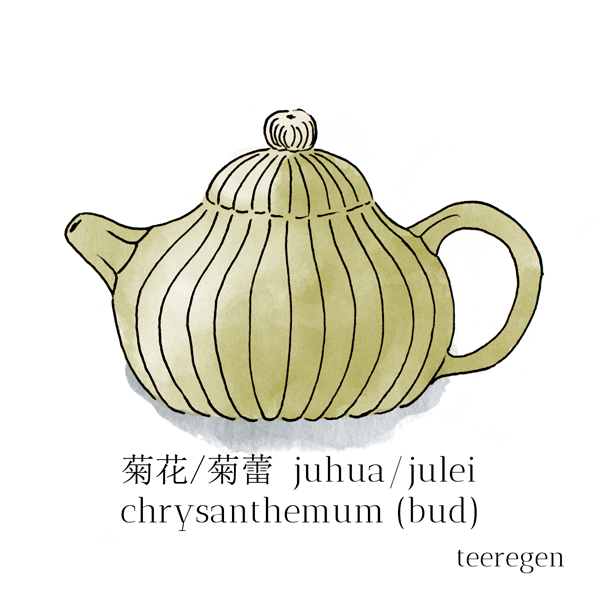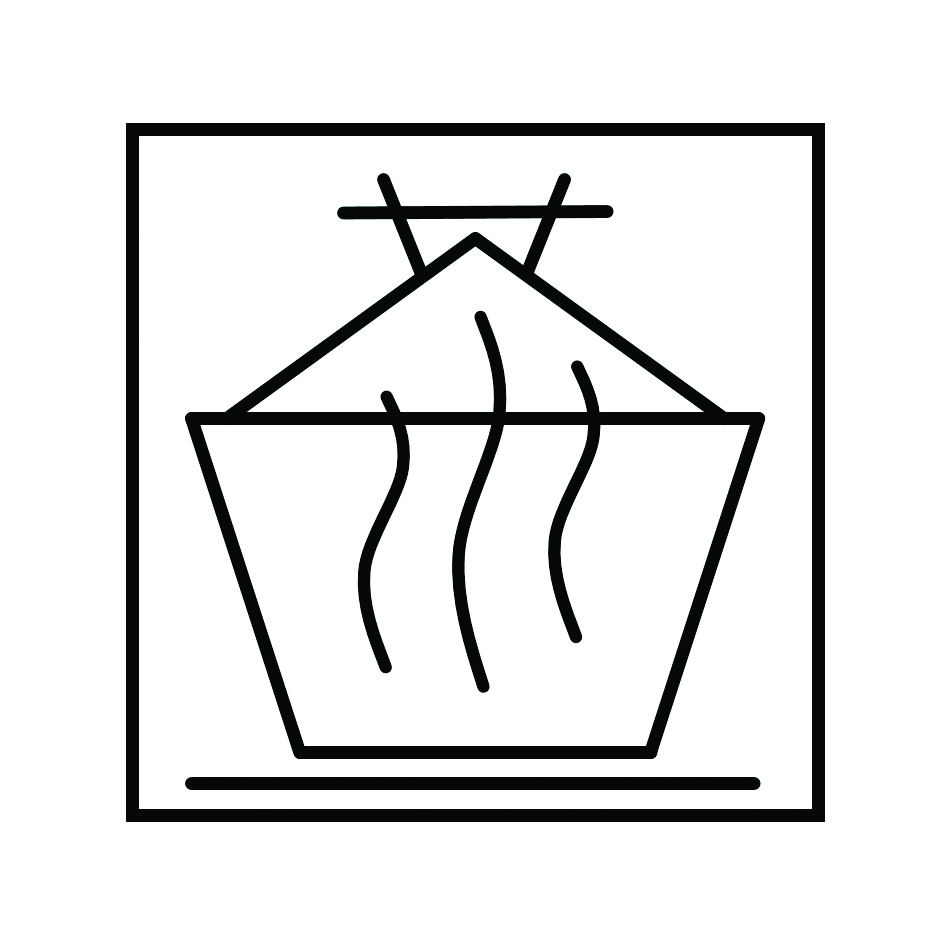‘Plum blossoms for winter, orchids for spring, bamboo for summer and chrysanthemums for fall.’

菊花/菊蕾
–
ju hua/ju lei
–
chrysanthemum/chrysanthemum bud
The chrysanthemum teapot is a good example of a segmented or ribbed teapot, meaning that while the general shape of the teapot is round, the teapot has vertical indentations or ribbing. A lot of teapots in this category are named after flowers, as the segments look like flower petals.
A chrysanthemum teapot has a lot of narrow segments, even more than 30 are possible. This is because chrysanthemum flowers also have long, narrow petals. This teapot can only be made by a master: not only must the segments be even, the overall shape cannot be affected either. In addition, the segments have to be continued in the lid, the transition smooth. It is also possible to have a pot with a dividing horizontal line at the pot’s biggest circumference, with ribbing above and below the line, creating the illusion of two layers of flower petals.
The chrysanthemum flower is one of the most revered flowers in China. Together with orchids, bamboo and plum blossoms, they form the 花中四君子 hua zhong si jun zi – the four virtuous plants. They represent the four seasons: plum blossoms for winter, orchids for spring, bamboo for summer and chrysanthemums for fall. There are many saying involving chrysanthemum, like 春兰秋菊 chun lan qiu ju (‘orchids in spring and chrysanthemums during fall’). These four plants are thus heavily represented in poems and paintings.
There is also chrysanthemum tea, although it is not recommended for yixing teaware because it is a flower tea. Both chrysanthemum tea and the chrysanthemum teapot are best suited for fall, just not together.
Get yourself some ‚Teapot Shapes I‘ and ‚Teapot Shapes II‘ postcards!
LY
